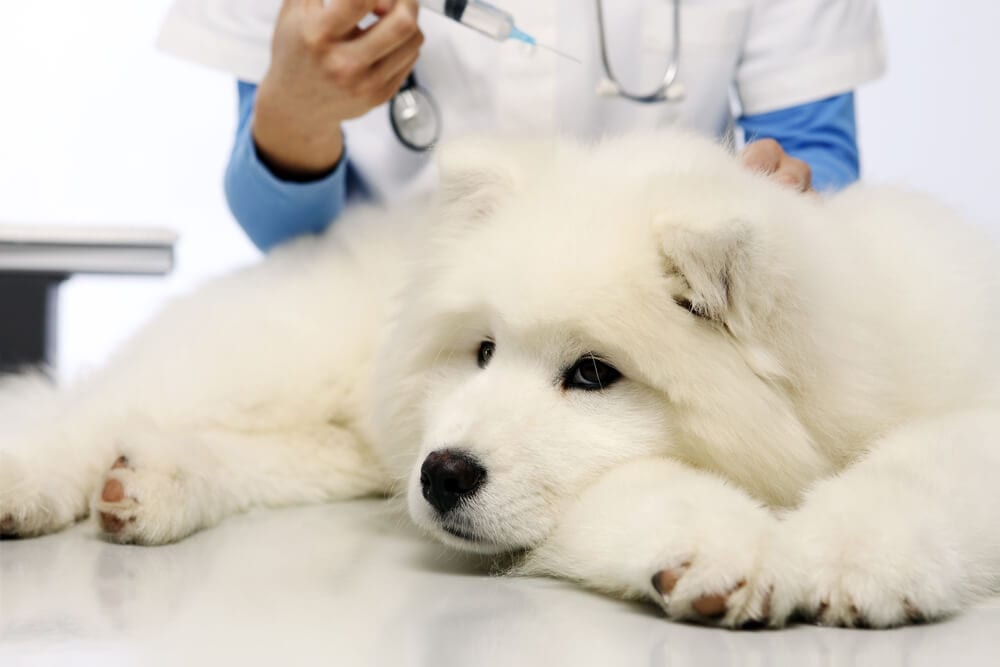
Your Pet and Cancer – What You Need To Know
Cancer is not a word taken lightly in the human or pet world. Nadia Crighton caught up with Veterinary Oncologist Dr Peter Bennett from the University of Sydney to discuss treatments and breakthroughs that can add years to the life of a pet.
Hearing the diagnosis that your beloved pet has cancer is not easy. As those words spill from your veterinarian’s mouth, it can evoke a huge amount of fear and dread. However, there are some important aspects pet owners need to know.
Firstly, Veterinary Oncology, like Medical Oncology, has seen some impressive improvements in treatment options for all patients over the past 15 years. In Veterinary Oncology, the science, understanding, treatment and access to Veterinary Specialists have hugely increased.
“For veterinary patients, it is the acceptance that there are things that can be done,” Dr Bennett says. “When I came back from the States in the year 2000, there was only one Surgical Oncologist in the country.” In Australia, there are now 12 Medical Oncologists, four Surgical Oncologists and four or five currently in training.
“So, the availability of specialist services and the knowledge has increased enormously,” Dr Bennett explains. This is very positive news for pet owners, as access to the knowledge is very important when deciding on the best treatment for your pet. Having a thorough understanding of your options can help immensely when dealing with your pet’s cancer diagnosis.
Coping with Treatment
When most of us consider cancer treatments our minds automatically flick to the type of aggressive treatments human patients endure. Hair loss, extreme sickness and a general lack of quality of life during the treatment are considered the ‘norm’.
However, in Veterinary Oncology, the treatment is different. It’s understanding that often your pet’s Oncologist will not be attempting to ‘cure’ your pet’s disease, but rather to ‘manage’ their cancer.
“In people, an Oncologist’s prime aim is to cure the patient,” Dr Bennett says. “For us, it is to give the patient as long a period of good quality life as possible, rather than necessarily trying to cure them.”
Why? You May Ask.
It all comes down to ethics and understanding that dogs and cats cannot give their permission for such invasive aggressive treatment. “We can’t ask our patients for consent,” Dr Bennett continues. “There are some diseases in people that can be cured, but they have to use very aggressive treatment, and we don’t think that’s fair to subject our patients to that when they are not aware of why this is happening.”
On the positive side, most pets cope very well with treatment. In fact, the majority of pet owners would not be able to tell if your pet was receiving treatment at all. Dr Bennett notes that some pets will have their ‘off days’, but these are only noticeable to the owner. They are often very subtle changes rather than major ones. “Some animals can get sick, and some can get very sick from treatment, but these are the minority, not the majority,” he says.
Success Rates
The wonderful progression in Veterinary Oncology has allowed furry cancer patients to see tangible success rates after treatment. In some cases, doubling and tripling their life expectancy, and in others, even longer
“In lymphoma patients, If, for a dog, we did nothing or just used palliative care the expectation would be one to two months,” Dr Bennett says. “With chemotherapy, half the dogs will still be alive in a year; a quarter will be alive in two years.”
It’s also about managing cancer and ensuring the quality of life. “We see some patients who have long-term treatments, for instance, one of my patients had two different types of cancer. The first was diagnosed in 2014 the second in August 2015,” Dr Bennett says. “One had surgery, and the other is not surgically treatable, but we’ve been managing his cancer now for two years, and he’s happy and bright and not showing any signs of cancer.”
Most things that are associated with cancer in people are not associated with cancer in our pets. However, there are a few steps you can take to help reduce the risk.
- Keep your pet at their correct weight.
- Neuter your female dog to prevent breast cancer.
- Do not smoke around your pets.
- Avoid high levels of exposure to pesticides and insecticides.
- Keep white dogs and cats out of the sun. Consider using sunscreen and sunsuits and keep in well-shaded areas during the peak of the day.
“We are trying to determine some of the genetics behind some of these cancers,” Dr Bennett says. “It might be, in the future, that selective breeding could reduce the risks in some breeds that do have a higher risk for cancers.”
Best Advice
The best advice when dealing with a diagnosis of cancer is to get an expert opinion and find out what all the options are for your pet.
“Yes, there are some really nasty and aggressive ones that will lead to the quick death of a patient, but there are ones that we can manage for a long time,” Dr Bennett says. “There are some people that have spent $10,000 to $20,000 treating their pets, which is not feasible for everyone. For most people just knowing what is available makes it easier for them to make the right choice for their pet.”
In the words of the Grandfather of Veterinary Oncology, Dr Stephen Withrow; “Cancer is a word, not a sentence.”
Get the latest Pet Insider Tips & News
We offer award-winning* pet insurance policies to protect your furry friend’s health and wellbeing. Get a quote today and give your pets the care they deserve.
Archives
Categories
- Cat Care (64)
- Cats (1)
- Dog Care (124)
- Guides (28)
- Health and Nutrition (200)
- Lifestyle and Activities (219)
- Media Release (24)
- Pet Care (246)
- Rescue Dogs (1)

